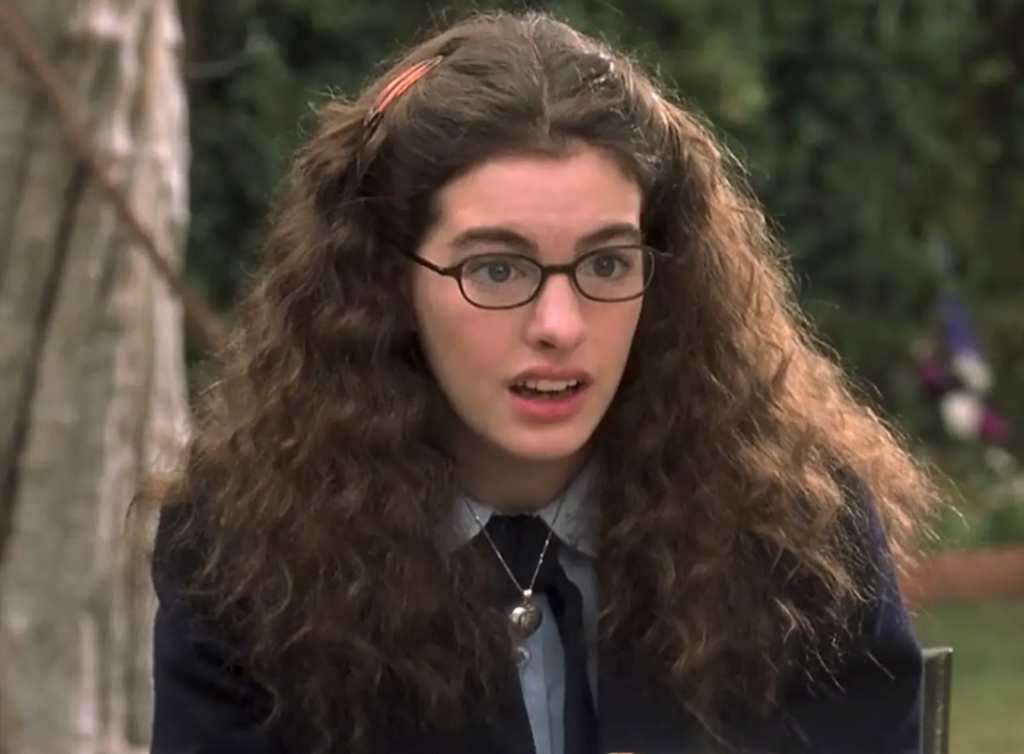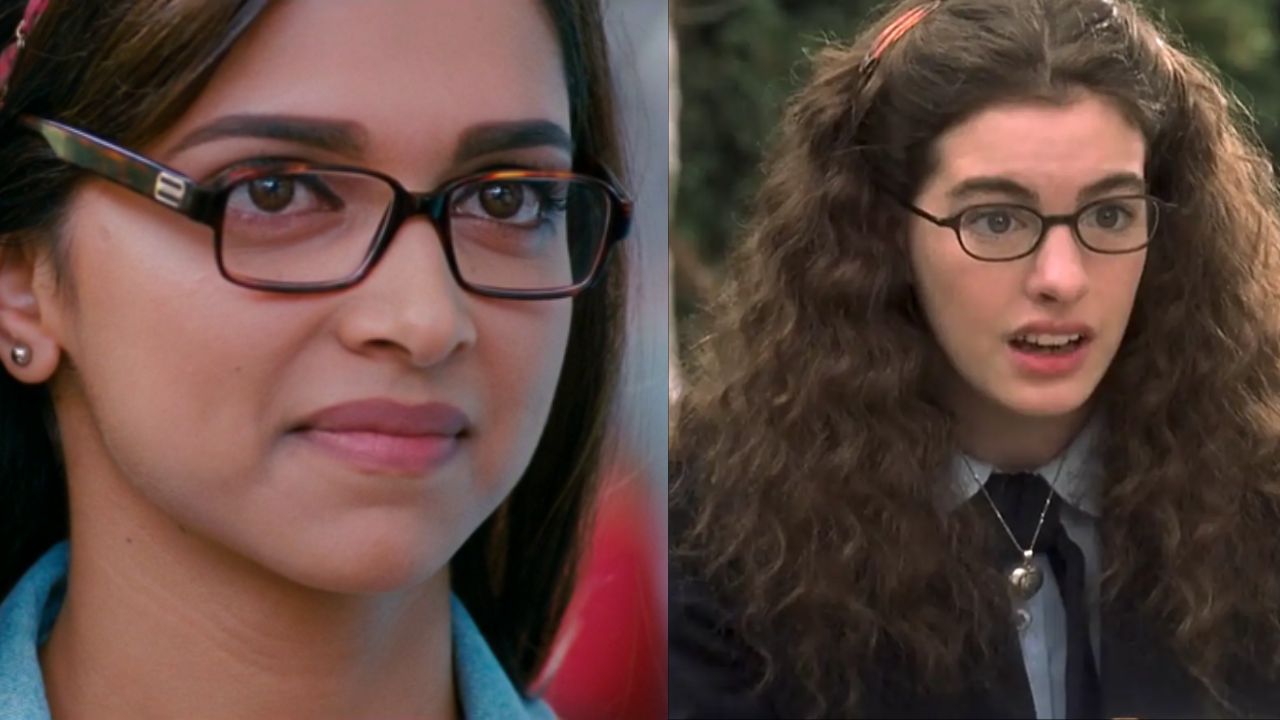From Hogwarts’s whimsical classrooms to Mumbai’s bustling streets, the “nerd girl” cliche has been a staple of commercial films for decades. The “nerd girl” trope is a mainstay in commercial films, Bollywood and Hollywood. There have been nuanced portrayals of stereotypical characters that narrow the views of femininity and intelligence. This character type is typically represented as highly intelligent but socially awkward, often wearing glasses, lacking male attention, and overly focused on academic or intellectual pursuits.
Both Bollywood and Hollywood films propagate clichés like the socially awkward brainiac, the makeover magic needed for desirability, the “beauty and the brains” dynamic, stereotypical visual coding, and the “I’m not like other girls” syndrome. Deconstructing these clichés allows us to see the possibilities for more nuanced portrayals that highlight female brilliance and individuality.
Brainy but socially awkward
One of the most popular yet common characteristics of a nerd girl in films is the presence of glasses. In Dilwale Dulhaniya Le Jayenge, Simran, played by Kajol, begins as a studious and reclusive girl wearing glasses. She is shown as being more concerned with her studies than her attractiveness or social life.
However, as the film unfolds and Simran falls in love with the attractive Raj, played by Shah Rukh Khan, she undergoes a makeover in both appearance and confidence. This aesthetic choice might be presented to hint to the audience that the character is more concerned with intellectual pursuits rather than her appearance.

A prime example from Bollywood is the character of “Naina” from “Yeh Jawaani hai Deewani” played by Deepika Padukone. She starts as a socially awkward character who wears glasses and exhibits nerdy tendencies, as the story progresses, she undergoes a transformation and falls in love with the cool, funny guy.
Think of Anushka Sharma’s character in “Band Baaja Baarat” (2010), a skilled event planner who has no interest in personal connections.
The makeover magic
Perhaps the most pervasive trope associated with the nerd girl type is the makeover trope, where the character undergoes a physical transformation to become more conveniently good-looking and attractive. This makeover usually entails a change in look, clothes, and demeanour, intending to adhere to societal beauty and femininity norms. One of the most popular examples of this cliche in Hollywood is the film “The Princess Diaries,” where Anne Hathaway’s character, “Mia Thermopolis,” goes through a drastic makeover to perform her royal duties.

“Sanam Teri Kasam” did a great job with the storyline but failed to present the authentic self of the character Saraswati played by Mowra Hocane. She, with the help of the Inder (Harshvardhan Rane), undergoes a makeover magic and starts getting male attention, overall it looks like all the studious girls are lacking is male attention and not academic validation which is ironic.
The Good Girl and the Bad Boy
The “nerd girl” is frequently partnered with the “jock” or “popular” guy, resulting in the traditional “beauty and the brains” combination. In Bollywood, films such as “Munna Bhai MBBS” (2003) and “Maine Pyar Kiya” (1989) show the “good girl” who uses her wits to subdue the “bad boy.”

While the cliché can be empowering, it frequently perpetuates the idea that opposites attract and that intelligence is supposedly a feminine characteristic that must “balance” a male quality such as athleticism.
Furthermore, “Yeh Jawaani Hai Deewani” also falls on the same line as Kabir (Ranbir Kapoor) being the popular, charming, flirtatious boy whereas Naina, the nerdy, studious never been in love guy, either there is a topper and a backbencher or vice versa but what about the middle benchers and the average people who is going to show their side, there is still a long way to go.
Beyond the Cliches
While these clichés persist, there are encouraging signs of more nuanced portrayals of intellectual women in Bollywood and Hollywood. Films such as “Dangal” (2016) and “Hidden Figures” (2016) feature female characters excelling in traditionally male-dominated areas while balancing personal relationships and cultural expectations.
Similarly, characters like Elle Woods in “Legally Blonde” (2001) question the notion that a woman cannot be both bright and fashionable. “Pink” (2016), this dramatic film follows three independent, strong-willed women as they fight back against a sexual assault. Their wisdom and resilience are important to the story, demonstrating feminine strength that extends beyond physical ability.
“Hasee Toh Phasee” (2014), This quirky rom-com defies expectations by introducing Meeta (Parineeti Chopra), a smart scientist who is also eccentric, humorous, and secure in her skin. The character promotes her intellectual interests and shows that she can find love without undergoing a makeover.
While commercial films have long depended on the “nerd girl” trope to drive their plots, it is critical to acknowledge the limitations of these clichés and strive for more authentic representations of women on screen. By deconstructing stereotypes and embracing different portrayals, filmmakers can question conventional views of beauty and intelligence, paving the door for stories about female empowerment and complexity. Moving forward, let us seek beyond the clichés and embrace the full range of female experiences in film.
References
- https://www.theswaddle.com/can-we-move-on-from-the-trope-of-the-bad-boy-with-a-good-heart
- https://www.bbc.com/news/world-asia-india-48754412
- https://goodmenproject.com/featured-content/i-am-a-female-nerd-apparently
- https://jis.athabascau.ca/index.php/jis/article/download/103/77?inline=1
About the author(s)
With a passion for storytelling and a keen interest in human behavior, Iti Dewangan is currently honing her skills in journalism, psychology, and English Literature. Having contributed to esteemed organizations like The Wire, Iti is dedicated to amplifying voices, uncovering truths, and making a positive impact through her writing. With a vision to become a respected journalist, she endeavors to navigate the ever-evolving media landscape with integrity, empathy, and a commitment to truth.






